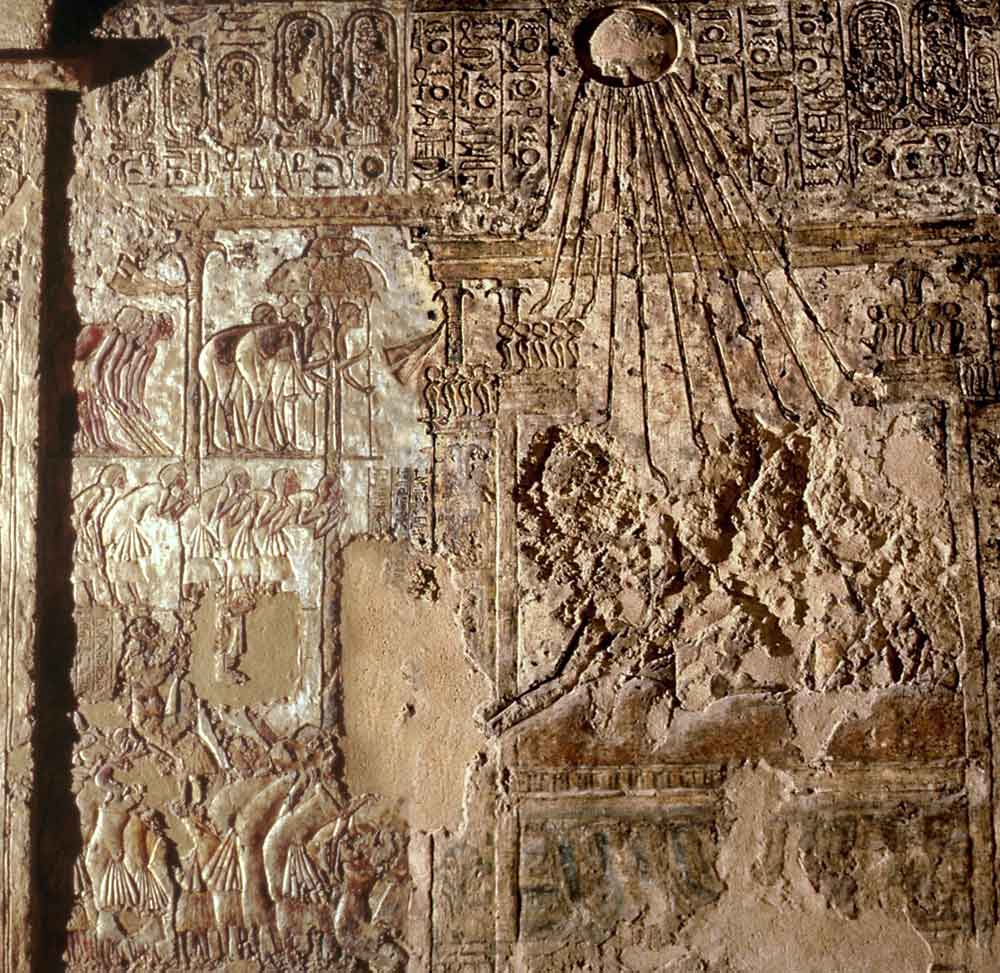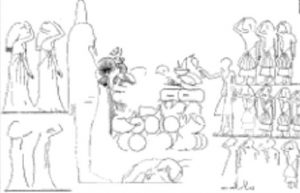In Ancient Egypt the afterlife and the eternity were concepts very inserted into belief.
The funerary art granted food, drink, furniture, religious cult…The mourning rite depicted was also crucial for the dead’s resurrection.

The Royal Family in the Window of Appearances. Tomb of Meryre. Photo: www.osirisnet.net
During the reign of Akhenaten, iconography coming from tombs of Amarna show mainly scenes of the “living ones”: Sculptors in the workshop, worship of the Aten, the activity in the palace, the royal family in the “Window of Appearance”…
Depictions relating the death are just a few. Here we will mention the tomb of Huya.
The corpse of Huya inside his coffin is standing in front of the funerary offerings. And a very typical funerary scene of the art in Ancient Egypt: the mummy being mourned.
In front of him a group of mourners are lamenting the death of Huya. These could be the common mourners, which cried and raised their arms during the funeral.

Funeral of Huya, Steward of Queen Tye. Tomb of Huya. after Davies Rock Tombs III, Pl. XXII (Egypt Exploration Society).
Behind the mummy of Huya four women are also mourning the dead. They could perfectly be the responsible of the mourning ritual made in Ancient Egypt for reviving the corpse. The main points for thinking so are:
- They appear separated from the rest, so they do not belong to the big group of common mourners.
- They stand very close to the mummy, and the mourning practices were made next and over the dead.
- They are four, and in some cases four women were the representatives of Isis, Nephthys, Neith and Selket. As we saw in previous posts, these four goddesses were also involved in the dead’s resurrection. On the other hand, four mourners also appear in some other scenes of mummy resurrection.
It seems that Huya received in Amarna an ancient Egyptian mourning ritual as all dead did before the reign of Akhenaten.

Detail of the funeral of Huya. Tomb of huya. after Davies Rock Tombs III, Pl. XXII (Egypt Exploration Society).Photo: Amarna Project
Probably as a legacy of the Theban Period, Queen Tye could not accept a death without a ritual of Osirian roots for granting the eternity to her steward.
So, we could think that the Osirian mourning ritual existed, at least occasionally, in Amarna.